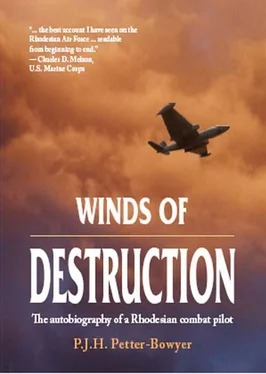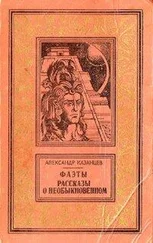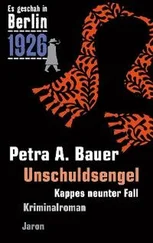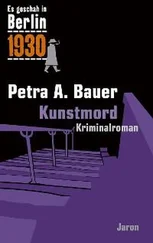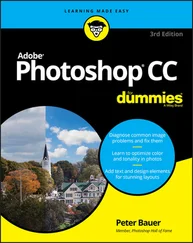Peter Petter-Bowyer - Winds of Destruction
Здесь есть возможность читать онлайн «Peter Petter-Bowyer - Winds of Destruction» весь текст электронной книги совершенно бесплатно (целиком полную версию без сокращений). В некоторых случаях можно слушать аудио, скачать через торрент в формате fb2 и присутствует краткое содержание. Город: Solihull, Pinetown, Год выпуска: 2012, ISBN: 2012, Издательство: Helion & Company, 30° South Publishers, Жанр: Биографии и Мемуары, на английском языке. Описание произведения, (предисловие) а так же отзывы посетителей доступны на портале библиотеки ЛибКат.
- Название:Winds of Destruction
- Автор:
- Издательство:Helion & Company, 30° South Publishers
- Жанр:
- Год:2012
- Город:Solihull, Pinetown
- ISBN:9781908916754
- Рейтинг книги:5 / 5. Голосов: 1
-
Избранное:Добавить в избранное
- Отзывы:
-
Ваша оценка:
- 100
- 1
- 2
- 3
- 4
- 5
Winds of Destruction: краткое содержание, описание и аннотация
Предлагаем к чтению аннотацию, описание, краткое содержание или предисловие (зависит от того, что написал сам автор книги «Winds of Destruction»). Если вы не нашли необходимую информацию о книге — напишите в комментариях, мы постараемся отыскать её.
Winds of Destruction — читать онлайн бесплатно полную книгу (весь текст) целиком
Ниже представлен текст книги, разбитый по страницам. Система сохранения места последней прочитанной страницы, позволяет с удобством читать онлайн бесплатно книгу «Winds of Destruction», без необходимости каждый раз заново искать на чём Вы остановились. Поставьте закладку, и сможете в любой момент перейти на страницу, на которой закончили чтение.
Интервал:
Закладка:
It was decided, therefore, to put in another ground recce. The SAS were fully committed on other tasks, so the Selous Scouts deployed one of their oft-proven two-man recce teams. This time no helicopter was used and the team walked in from the border. Unfortunately, it was detected in the early stages of its passage through the base and was forced to call for hot extraction. By now, however, captured CT’s were indicating that the base was highly prepared with sophisticated heavy anti-air and ground defences specially sited by Russian advisors. The deaths of three Russians certainly gave weight to these reports. The captured CTs also said ZANLA felt too strong to be frightened off the present base position by the passage of any aircraft.
The rainy season had started early this year but a photo-recce flight was made immediately a gap appeared in the weather. Even though the JSPIS photo-interpreters had poor-quality photographs to work from, they immediately identified elaborate defences including many heavy-calibre gun positions and extensive trench works linking and surrounding each of at least four bases. Typical for this time of year, cloud cover masked much of the ground in which we believed there must be additional bases. They needed to be pinpointed and analysed but bad weather thwarted further attempts to photograph the area.
Fortunately, two high features at the northern end of a line of rugged mountains contained the bulk of the defences, and these had been exposed. Since there was need to get on with the job, planning for an operation codenamed ‘Miracle’ was formulated on the basis of what was known and a fair amount of reasoned guesswork on what could not be seen.
The SAS were preparing to go external against two large bridges in Zambia and another three in Mozambique, but this was not the only reason the Selous Scouts were earmarked for the job with RLI in support.

Operation Miracle

INTELLIGENCE INDICATED THAT ONLY ZANLA occupied the New Chimoio base and that FRELIMO had sent them far away from Chimoio town to prevent Mozambican civilians from becoming involved in future RSF raids. Captured men also indicated that if CTs were forced to leave the base, they would move towards Rhodesia because FRELIMO had forbidden them from going in any other direction.
Ron Reid-Daly recognised that this suited Selous Scouts pseudo work perfectly, so he decided to deploy a large number of pseudo callsigns to the north, west and south of the base. Once in position, and under Ron’s direct command from his own forward HQ set high on a border mountain, the callsigns would interrupt ZANLA’s supplies and, coupled with Air Force bombardment, induce fire-fights that would have CTs in a jitter. Ron expected that the CTs would not know who was pseudo and who was genuine, thus forcing them to indulge in attacking one another on sight. To the east of the base, RLI paratroopers would form a line of ambushes to take on any CTs breaking east in contravention of FRELIMO orders.
The plan was wonderfully unconventional and would certainly have prevented the imminent launching of large numbers of ZANLA intent on influencing the Lancaster House talks. However, General Walls rejected the idea, initially preferring to employ well-proven operational methods. This soon changed because there was considerable apprehension over Soviet advice and planning for ZANLA’s defences. Those that we could see were clearly superior to any ZANLA defences encountered before.
Besides, we remembered how in 1967-8 Soviet studies of Rhodesian tactics and operational methods had led ZAPU and SAANC to use difficult crossing points over the Zambezi River where gaps existed in our border control. The reader will recall that large groups were deep inside Rhodesia before Ops Nickel and Cauldron got underway. More recently, we had seen the effectiveness of Soviet planning at Mapai; so now we wondered if those Russians killed by the SAS had prepared a deadly trap for us at New Chimoio. It occurred to the planning team that the well-proven vertical envelopment of bases by paratroopers and helicopters might be exactly what the Russian advisors would expect, particularly as the base was less than twenty kilometres from the border and a mere fifty kilometres northeast of Umtali. We simply could not take the risk of running our helicopters and slow fixed-wing aircraft into a well-laid Soviet trap.
Consequently it was decided to go conventional by employing Selous Scouts in their vehicle-borne fighting role with large-calibre guns and jets in support. Since this would involve moving many men and vehicles into position before launching Op Miracle, there was concern that the CTs in nearby New Chimoio would be fully prepared for the attack. So, to mask our true intentions, it was decided to mount high-density operations to create as much noise and movement as possible in the Mutasa and Holdenby Tribal Trust Lands whose eastern boundaries were the international border nearest to New Chimoio. As the HD Op got under way on 27 September, Selous Scouts pseudo teams moved in amongst the African population along and across the border to prepare for the expected westerly breakout from New Chimoio.
The high-density operation ruse undoubtedly worked, but it cost us dearly when three fine men and a K-Car were lost. Air Lieutenant Paddy Bate was flying down a river-line in the Mutasa TTL when his K-Car was pulled to the ground by power-lines he had not seen. Paddy, his gunner Sergeant Gary Carter and RLI Major Bruce Snelgar were all killed.
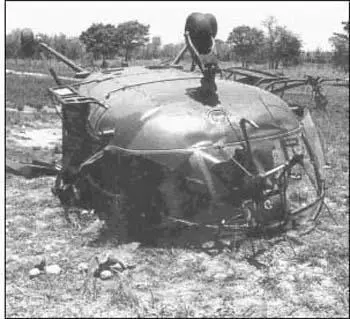
This was the fourth incident of helicopter crashes through cable- and power-lines that I can recall. In November 1973 Squadron Leader Eddie Wilkinson and Sergeant Woods were returning from an action flying low level directly towards the setting sun. Eddie spotted troops waving madly next to a stationary vehicle. He thought they were in distress and turned back to investigate. Blinded to some extent by the sun, Eddie failed to see the telephone lines that snagged his nose wheel as he came into the hover. Feeling himself being drawn downward he increased collective to climb but this simply resulted in the aircraft being somersaulted into an inverted crash. Though he and his technician were lucky to escape alive, Eddie was annoyed with himself when he learned that the soldiers had only been waving in friendly manner at the passing helicopter.
Then in December 1975, SAAF Lieutenant van Rensburg was the only survivor of the Vumba cable incident in which General John Shaw and Colonel Dave Parker died. In March 1977, Mike Mulligan suffered head injuries in a crash following collision with power-lines near Mrewa. According to fellow pilots this brought about a substantial change to Mike’s character. This was because he had ended up inverted and, as would happen later to Mark Dawson, choked on his armour vest.
Returning to Op Miracle. Two days later, in the early hours of 29 September 1979, the Scouts fighting column commenced the difficult task of crossing the Honde River border into Mozambique. This constituted the only major obstruction between Rhodesia and the ZANLA base. The mobile force of Selous Scouts, Armoured Car Regiment and Rhodesian Artillery comprising one command vehicle nicknamed “the Pig”, nine Eland armoured cars, twelve infantry vehicles carrying 320 infantrymen, and six 25-pounder artillery guns.
Читать дальшеИнтервал:
Закладка:
Похожие книги на «Winds of Destruction»
Представляем Вашему вниманию похожие книги на «Winds of Destruction» списком для выбора. Мы отобрали схожую по названию и смыслу литературу в надежде предоставить читателям больше вариантов отыскать новые, интересные, ещё непрочитанные произведения.
Обсуждение, отзывы о книге «Winds of Destruction» и просто собственные мнения читателей. Оставьте ваши комментарии, напишите, что Вы думаете о произведении, его смысле или главных героях. Укажите что конкретно понравилось, а что нет, и почему Вы так считаете.
